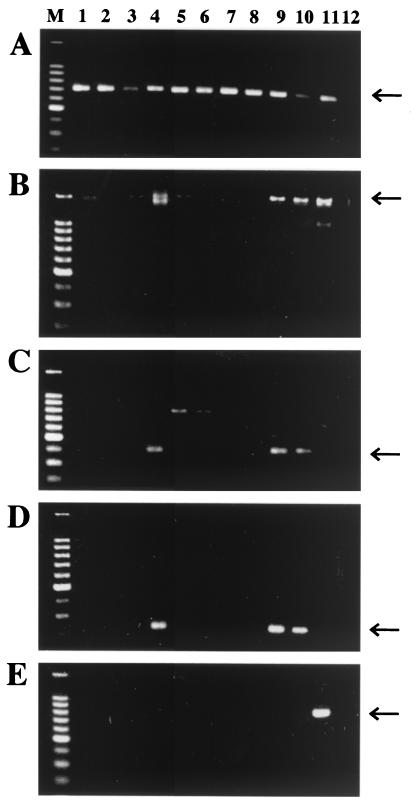FIG. 2.
PCR detection of Rickettsia spp. in glossiphoniid leeches. (A) Detection of mitochondrial cytochrome oxidase I gene of leeches with primers LCO1490 and HCO2198; (B) detection of eubacterial 16S rRNA gene with primers 16SA1 and 16SB1; (C) specific detection of citrate synthase gene of Rickettsia spp. with primers CS1 and CS2; (D) specific detection of 16S rRNA gene of Rickettsia spp. with primers 16SA1 and Rick16SR; (E) specific detection of the ftsZ gene of Wolbachia spp. with primers ftsF and ftsR. Lane M, DNA size markers (1,500, 1,000, 900, 800, 700, 600, 500, 400, 300, and 200 bp from top to bottom); lane 1, Helobdella stagnalis; lane 2, Placobdelloides sp.; lane 3, Ancyrobdella smaragdina; lane 4, H. marginata; lane 5, Glossiphonia complanata; lane 6, Glossiphonia sp.; lane 7, Alboglossiphonia lata; lane 8, T. tukubana; lane 9, T. tagoi; lane 10, a bruchid beetle, Kytorhinus sharpianus, harboring a Rickettsia sp.; lane 11, a bruchid beetle, Callosobruchus chinensis, harboring a Wolbachia sp.; lane 12, no template control. Arrows indicate specific PCR products. Other faint bands are due to nonspecific amplifications.

